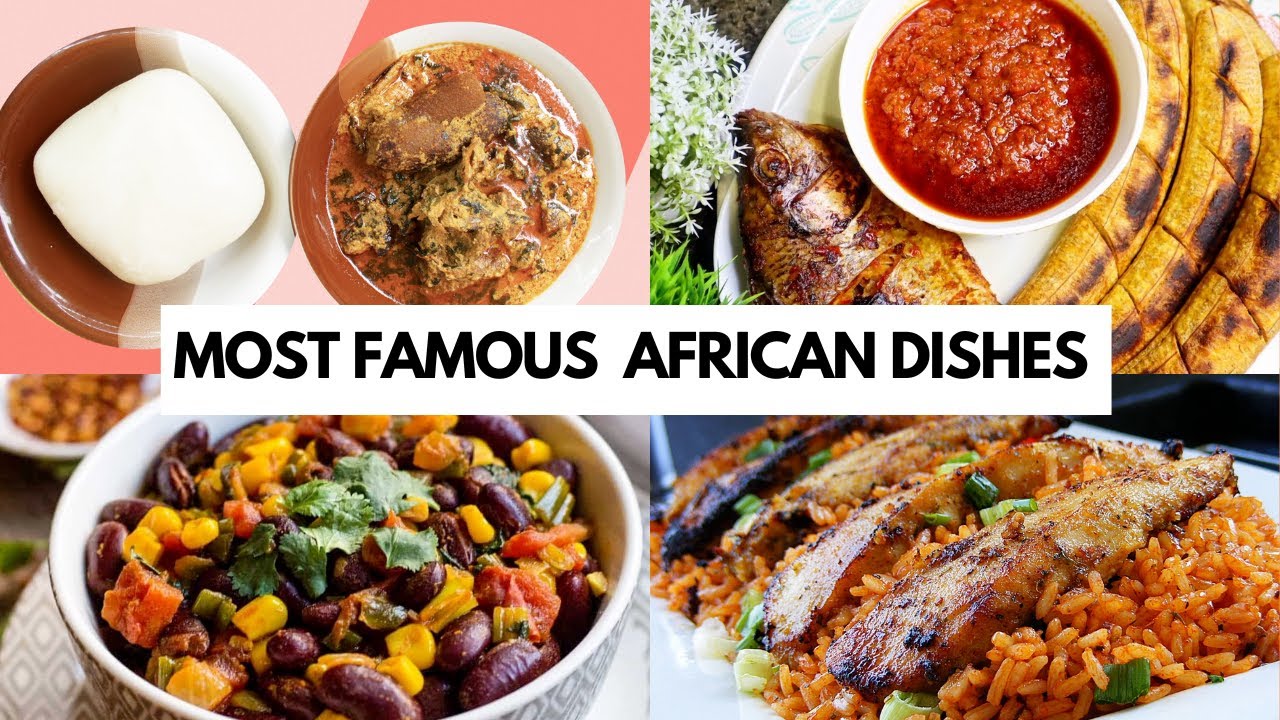Africa is a continent of immense diversity—languages, landscapes, music, and especially food. Across its 54 countries and thousands of ethnic groups, traditional African cuisine is bold, flavorful, nourishing, and deeply rooted in culture.
While African food doesn’t always get the global spotlight it deserves, it’s finally gaining recognition for its vibrant spices, fresh ingredients, and unique cooking methods. In this article, we’ll take you on a delicious journey through 10 must-try traditional African dishes that celebrate the continent’s culinary heritage.
So, grab a plate (or your hands—many dishes are meant to be eaten that way!), and let’s dig in.
1. Jollof Rice – West Africa’s Pride
You can’t talk about African food without mentioning Jollof Rice. This beloved one-pot dish, made with rice, tomatoes, onions, and spices, is a staple in countries like Nigeria, Ghana, Senegal, and Sierra Leone.
Each nation has its own spin, sparking the ongoing “Jollof Wars”—a playful rivalry over whose version reigns supreme. Nigerian Jollof is famously spicy, while Ghanaian Jollof boasts fragrant herbs and basmati rice.
Jollof Rice is a party dish, a comfort meal, and a symbol of West African unity (and friendly competition).
2. Injera with Doro Wat – Ethiopia and Eritrea
If you’ve ever eaten Ethiopian or Eritrean food, you’ve likely had Injera—a spongy sourdough flatbread made from teff flour. It’s served with an array of stews and veggies, but the star is Doro Wat, a spicy chicken stew simmered with berbere spice and hard-boiled eggs.
The best part? You use the injera to scoop up the stew—no utensils required. This communal style of eating emphasizes sharing and connection, core values in East African culture.
3. Pounded Yam and Egusi Soup – Nigeria
This dish is a West African comfort food classic. Pounded yam is made by boiling and pounding yam until it becomes stretchy and smooth, almost like mashed potatoes with a bounce. It’s served alongside Egusi soup, an Igbo food made with ground melon seeds, spinach, and rich meats or fish.
Eaten by hand, you pinch off a bit of the yam, dip it into the soup, and enjoy the explosion of flavors. It’s heavy, hearty, and highly satisfying.
4. Bunny Chow – South Africa
Don’t let the name fool you—there are no rabbits involved! Bunny Chow is a South African street food with Indian roots. It’s essentially a hollowed-out loaf of bread filled with spicy curry, typically made from chicken, lamb, or beans.
Originally created in Durban by the Indian community, it’s now a nationwide favorite. It’s messy, delicious, and absolutely unique to South Africa’s multicultural food scene.
5. Waakye – Ghana
Pronounced “waa-chee,” Waakye is a popular Ghanaian dish made with rice and black-eyed peas or cowpeas, cooked together and served with sides like boiled eggs, fried plantains, spaghetti, shito (spicy black pepper sauce), and meat or fish.
It’s a complete meal that hits every flavor note—savory, spicy, and slightly sweet. Usually eaten for breakfast or lunch, Waakye is sold on nearly every street corner in Ghana.
6. Couscous Royale – North Africa
In countries like Morocco, Tunisia, and Algeria, couscous is more than a side dish—it’s a way of life. The fine semolina grains are steamed to perfection and served with a fragrant stew of meat (often lamb or chicken), chickpeas, and vegetables like carrots, zucchini, and turnips.
Couscous Royale is especially popular for gatherings and Friday family meals. It’s both comforting and complex, seasoned with cinnamon, cumin, and preserved lemon.
7. Thieboudienne – Senegal
Known as the “national dish of Senegal,” Thieboudienne (pronounced cheb-oo-jen) translates to “rice and fish.” It’s made by cooking marinated fish, tomato paste, and vegetables like cassava, carrots, and cabbage over broken rice.
What makes it special is the depth of flavor from ingredients like tamarind, garlic, and chili. It’s traditionally eaten communally, with everyone gathered around one large bowl.
8. Matoke – Uganda
Matoke, or matooke, is a starchy green banana that’s boiled or steamed until tender, then mashed and served with a flavorful sauce made from peanut, tomato, or meat-based stews.
It’s a staple in Ugandan households and is sometimes paired with groundnut sauce or beef stew. Its smooth, creamy texture and mild taste make it the perfect base for rich toppings.
9. Nyama Choma – Kenya and Tanzania
Nyama Choma means “grilled meat” in Swahili, and it’s the East African answer to barbecue. Usually made from goat, beef, or chicken, the meat is seasoned simply and slow-roasted over an open flame.
Served with sides like ugali (cornmeal mash) and kachumbari (a tomato-onion salad), it’s a favorite for weekend gatherings, especially with a cold drink and good company.
10. Fufu and Light Soup – Ghana and Ivory Coast
Fufu, similar to pounded yam, is made from cassava, yams, or plantains, pounded into a dough-like consistency. It’s served with light soup, a spicy tomato-based broth with goat meat, fish, or chicken.
The unique thing about fufu? It’s swallowed, not chewed! A small piece is dipped in the soup and swallowed whole—a fun and traditional eating experience.
Why African Cuisine Deserves the Spotlight
African food is not only delicious—it’s deeply symbolic. It represents family, tradition, resilience, and celebration. Dishes are often passed down through generations and made with love, patience, and cultural wisdom.
Unfortunately, African cuisines are still underrepresented globally. But that’s changing. More chefs, food bloggers, and travelers are discovering the incredible variety and depth of African dishes.
And thanks to diaspora communities, African restaurants and pop-ups are appearing around the world, bringing flavors from the motherland to curious palates everywhere.
From spicy stews and grilled meats to sweet plantains and savory porridges, traditional African cuisine is an endless adventure for the senses. Whether you’re looking for comfort food, festive meals, or something new and bold, Africa has something to offer.
At Afriker.com, we’re passionate about sharing these culinary treasures with the world. Try one of these dishes, explore your heritage, or simply fall in love with new flavors. Either way, African food is something worth celebrating.
Bon appétit—or as we say in Yoruba, “E jọ̀ọ́” (Come and eat)!

